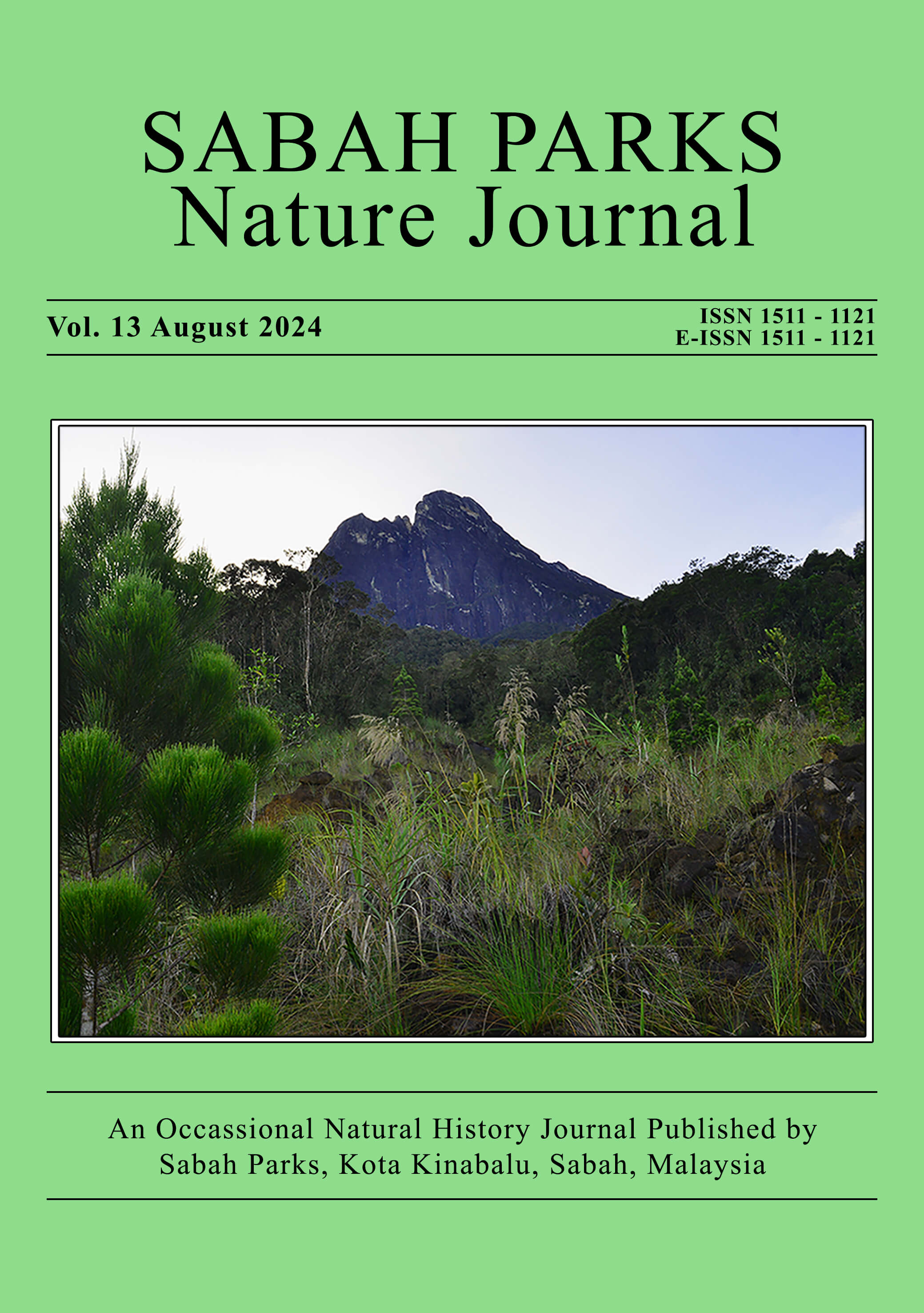An Elevational Survey of Honeybee Species In Marai Parai, Mount Kinabalu
Keywords:
honeybee, altitudinal distribution, Kinabalu Park, morphological characters, foraging sitesAbstract
The honeybees (Apis spp.) constitute a monophyletic genus with ten recognised species exhibiting notable geographic variations. Sabah hosts five honeybee species, spanning the Micrapis, Megapis, and Apis clades. This study aims to establish the baseline data on the altitudinal distribution of honeybee species in Marai Parai, the northwestern side of Kinabalu Park. Samples were collected over a five-day period using opportunistic netting techniques. Species were identified based on morphological characters using published identification keys. The honeybees were collected on three elevations, including Nunuk Subcamp (1177m a.s.l), Nabalu Sambau (1400m a.s.l.) and Marai Parai Subcamp (1696 m a.s.l.) consisting of three different forest types of lowland dipterocarp forest, oak-chestnut montane forest and ultramafic forest respectively. The majority of the collection was carried out at 1177m a.s.l. (58.73%), followed by 1696m a.s.l. (34.92%) and 1400m a.s.l. (6.35%), reflecting the variability in sampling effort. Four out of five honeybee species known in Sabah were collected: dwarf honeybee A. andreniformis, giant honeybee A. dorsata, and two cavity-nesting honeybees A. cerana and A. nuluensis. Six different foraging sites were recorded in this study, including cut banana trees, herbaceous plants, wet ultramafic rocks, wet cut wood logs, food waste, and cut wood logs. More research should be conducted on honeybee species, diversity, and elevational distribution in Kinabalu Park to gain a deeper understanding of their foraging behaviour and ecological roles.
 Views : 491
/
Views : 491
/  Download : 401
Download : 401


